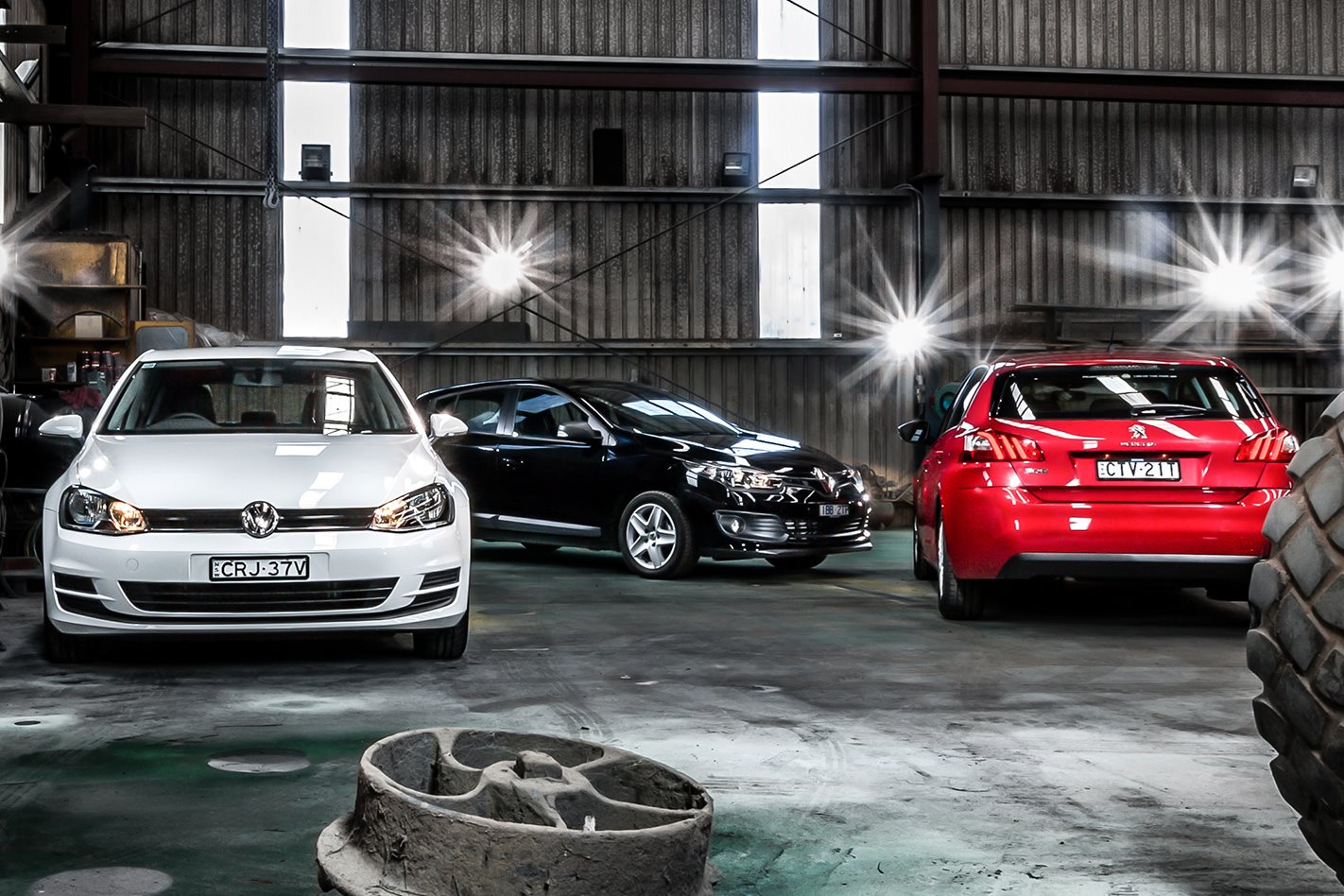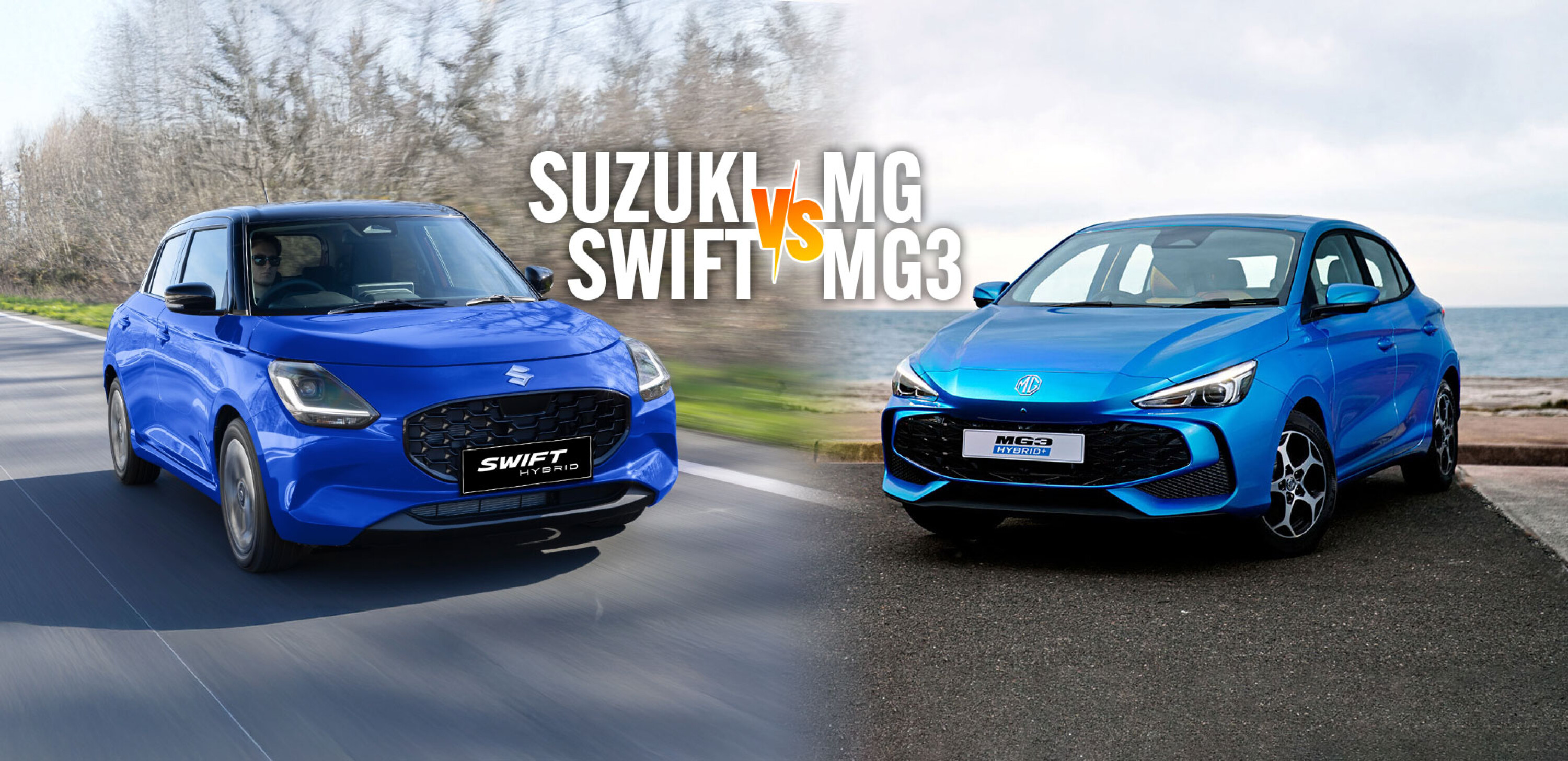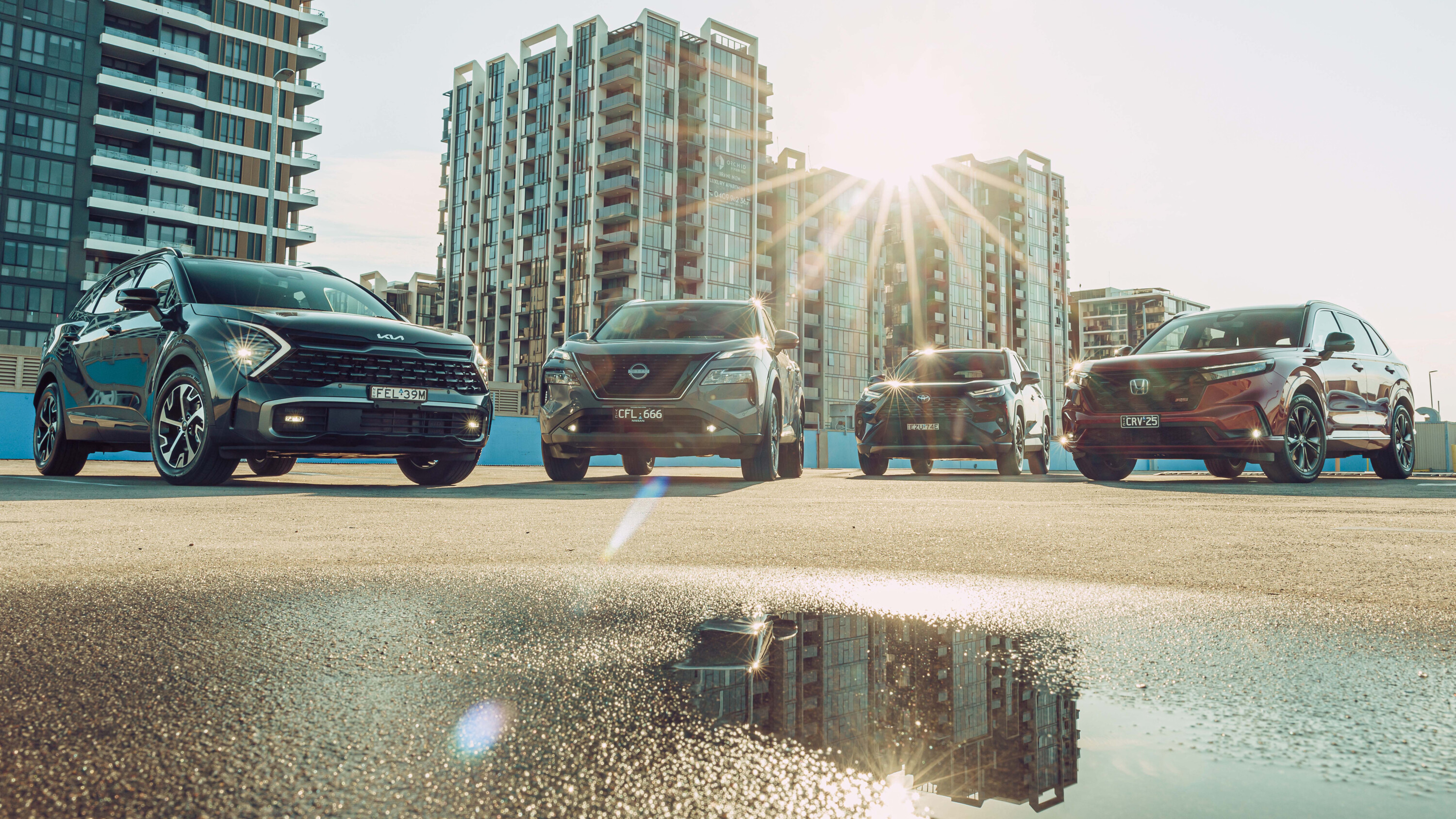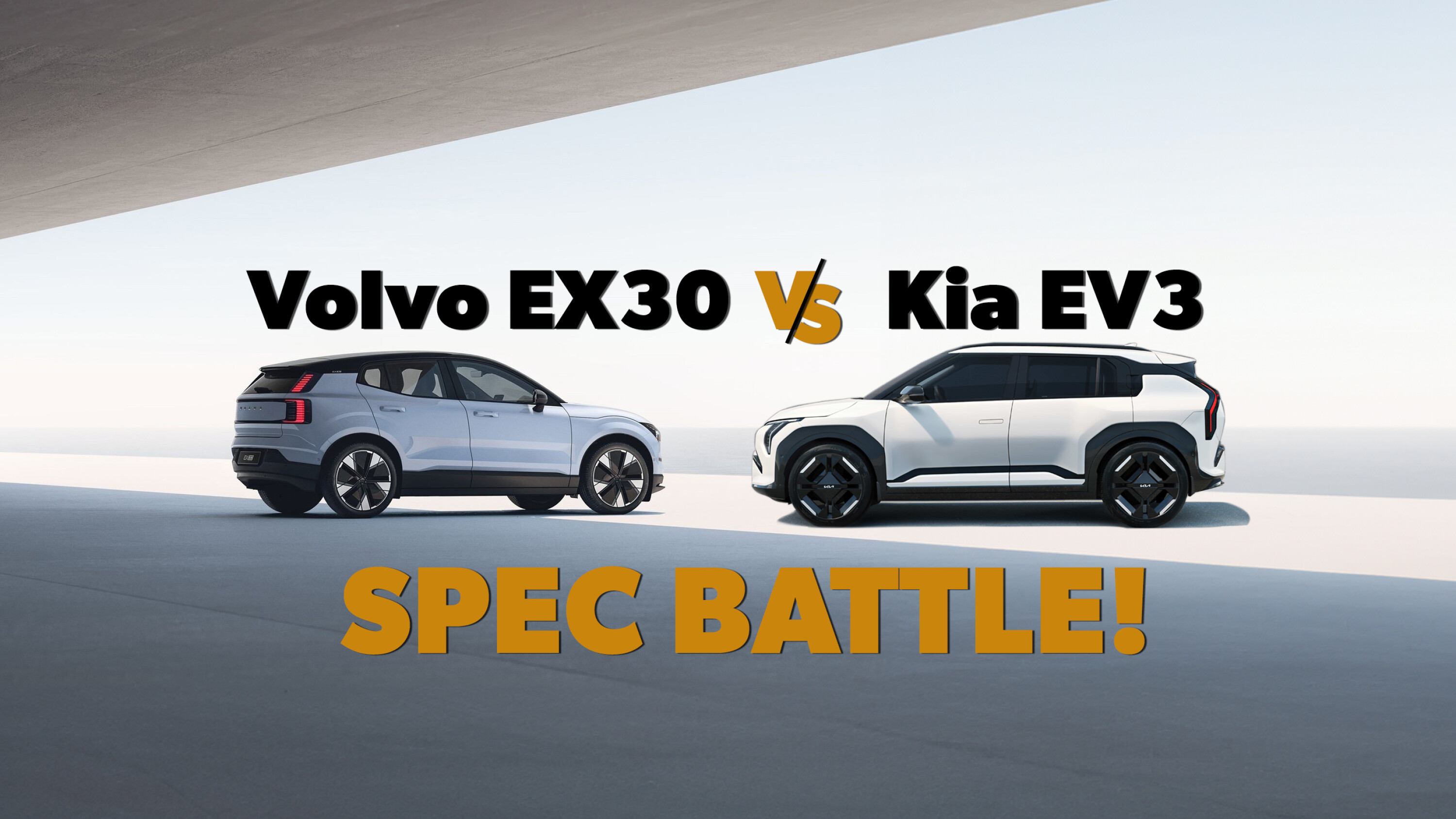In an ever-automated world, here are three affordable Euro manuals that prove it’s great to shift your own gears.
First published in the April 2015 issue of Wheels magazine, Australia’s most experienced and most trusted car magazine since 1953.
Can’t wait to see the final scores? Jump to the verdict now.
IT’S no wonder the world is going automatic. Long gone are the days when losing a clutch pedal also meant sacrificing a gear ratio or two, as well as a great wad of performance. About the only thing anyone could miss from the bad old days of glacial small autos is some of the marketing names, though whoever thought ‘Toyoglide’ gave an impression of speed had clearly never driven one.
If you love driving, nothing beats the pleasure of a great manual. And if you don’t mind lowering your aspirations to the bottom end of the small hatchback market, there’s a wealth of sharp-shifting manuals waiting to tempt the Fangio in all of us.
Three pedals, three ways
Europeans worship the manual gearbox almost as much as the Greeks love smoking, so it’s no surprise that Peugeot, Renault and Volkswagen open their nifty-handling 308, Megane and Golf ranges with six-speed, three-pedal variants.
In the Volksy, you can have a manual in either the $21,490 base car or the retiree-tinged $25,240 Comfortline, but not the beautifully finished Highline (even though it exclusively offers a sporty R-Line package). The Frenchies, however, only serve up a manual in their entry-level specials – the $20,990 Megane Authentique and $21,990 308 Access – or their performance models. So we’ve gathered the cream of the affordable Euro crop, all sub-$22K yet also surprisingly flash for the poverty end of the market.
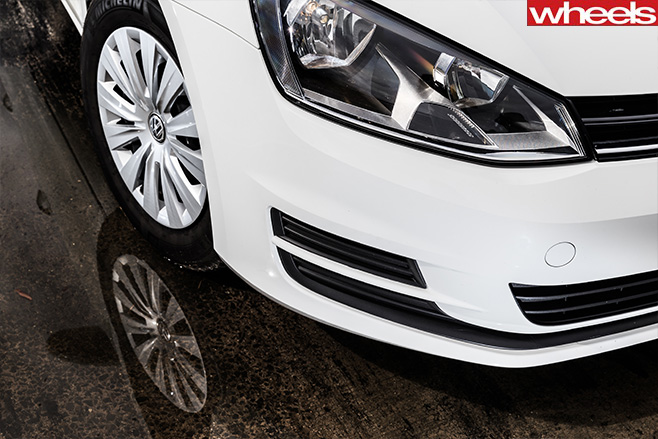
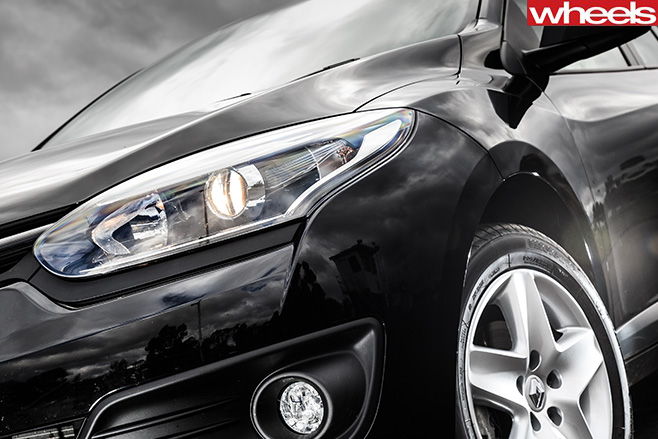
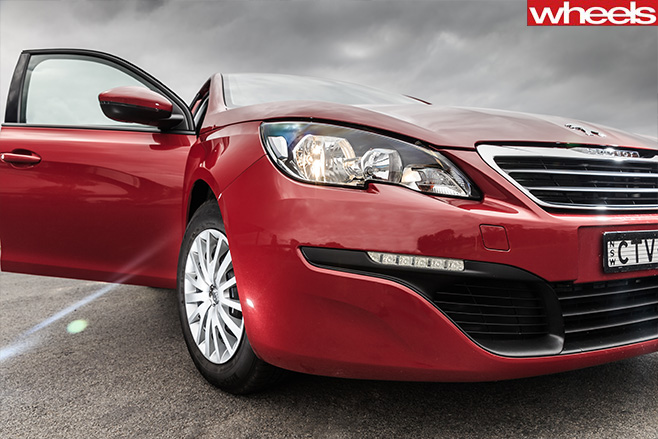
Pushing the go-pedal
Sadly, that’s where the GT-R connotations end for the Renault. Its 97kW/205Nm 1.2-litre turbo four – an uprated version of the same donk in the Clio – is no powerhouse, though a 17.4sec standing-400m time ain’t too shabby for a large-ish hatch with a small engine.
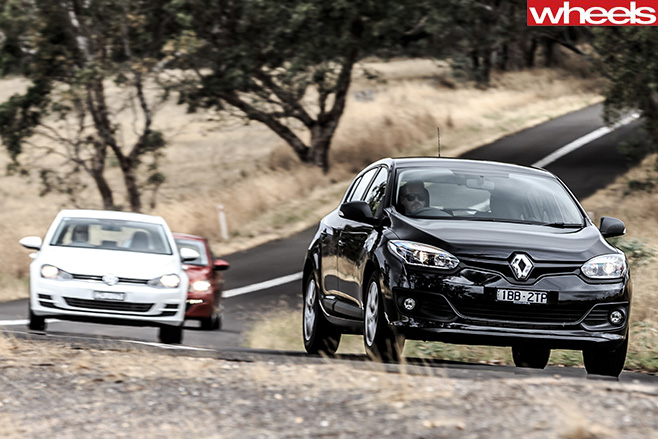
Where it drops the ball, though, is in shift feel. Its firm, short-travel clutch and meaty gearchange lack the crispness that makes the Peugeot and Volkswagen manuals so pleasant to use. Combine that with the softness of the Renault’s turbo boost and throttle response, and you’re left feeling slightly dissatisfied. But there’s definitely some latent potential. How about more boost please, Regie?
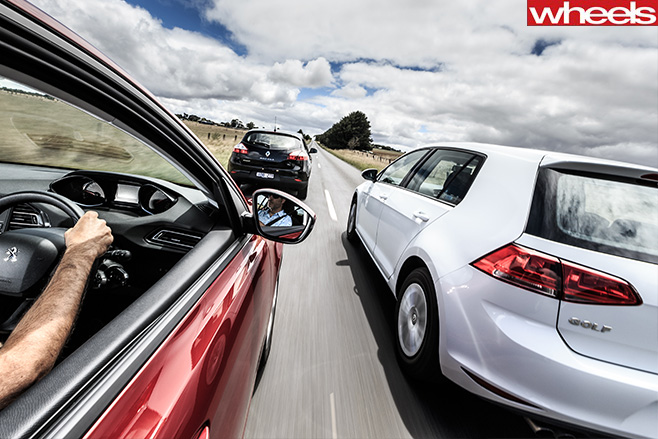
Given the worker-bee quality of most mass-market French petrols, it’s a revelation that Peugeot’s ‘Pure Tech’ 1.2-litre turbo triple is such a fantastic engine. On paper, its 96kW/230Nm outputs aren’t greatly different to the Renault’s, yet there’s a sparkle to the Peugeot’s throttle response, and a sweetness to its power delivery that raises this engine to another level. Without question, this is the greatest three-cylinder engine of all time, with the possible exception of some obscure mad-bastard domestic-market Daihatsu from the 1980s.
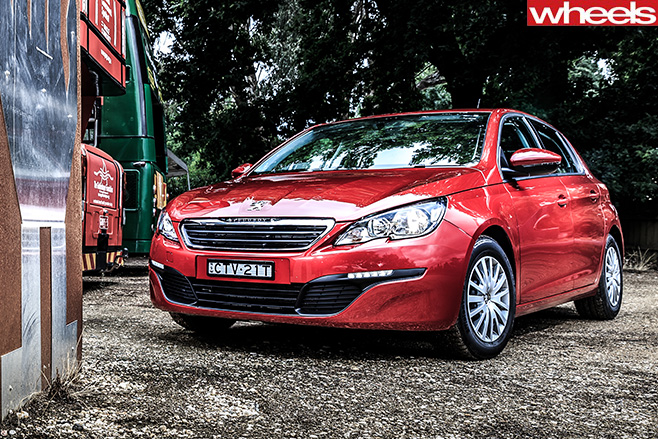
Winding on lock
Where the Megane claws back some ground, and ultimately argues the strongest case for itself, is on a twisty road. It’s the easiest car of the three to simply jump into and drive hard, displaying instant poise and adjustability from a lifted throttle that enhances its involvement, and elevates its handling to a level far beyond most of the competition at its $21K price point. Indeed, the Megane’s co-operative back end proves that torsion-beam bums are what you make of them, and that this pseudo driver’s car has more than a hint of Renaultsport about its chassis.
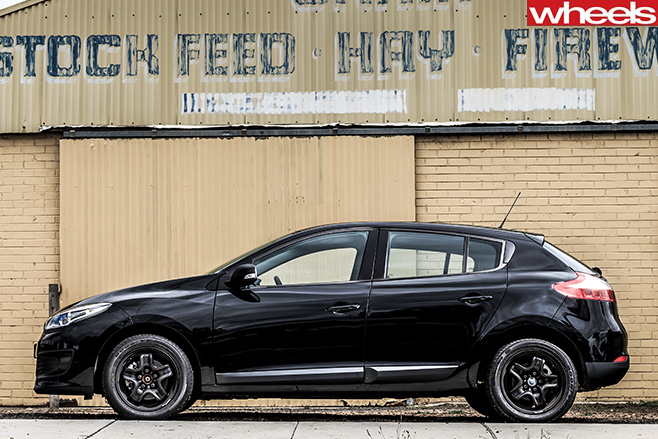
But the 308’s chassis is instantly up for it. It’s much more reactive to mid-corner throttle adjustments than the Golf, and while it feels more softly sprung than the Megane, the 308’s sharp steering, quick turn-in and terrific body control give it a layer of dynamic polish that the handling-biased Renault fails to achieve. And the 308 does so with personality and panache.
In the Golf, everything harmonises with such lovely, seamless fluidity that you almost don’t notice how capable it is at first because you just feel so calm and relaxed when driving it. The VW’s big steering wheel and the on-centre aloofness of its steering are in sharp contrast to the Peugeot’s hyper keenness, but its chassis is sweetly balanced and its refinement continues to be a highlight. Pity the driver’s seat doesn’t offer lumbar adjustment, though, and its somewhat squeal-prone 195/65R15 Michelin Energy Savers don’t seem to have the wet-road purchase of the French pair’s Goodyear Efficient Grip tyres – 195/65R15s on the Peugeot and sportier 205/55R16s on the Renault.
Just cruising
But the Golf holds one invincible ace up its sleeve and that’s ride. The quiet and serene fashion with which it blots virtually any road surface is exceptional for any car, let alone a small hatchback. The entry-level Golf is truly a luxury car in a concentrate, with class-leading rear seat room and comfort, and little extras such as individual map lights and fully lined door bins designed to take 1.5-litre water bottles.
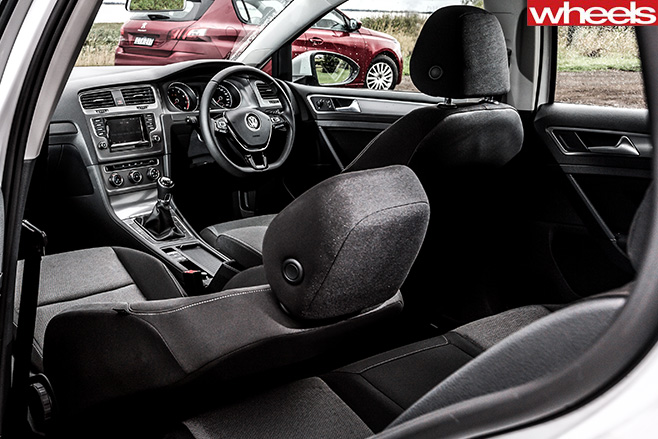
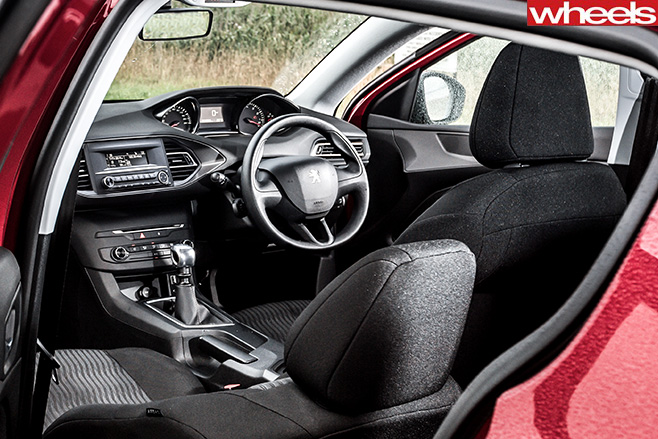
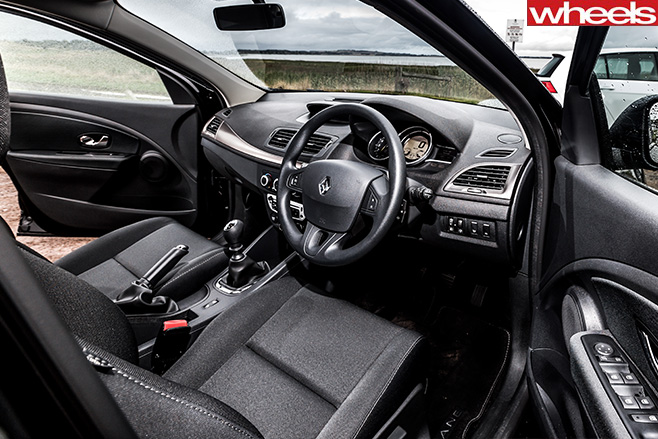
Close-run thing
So while the Megane Authentique’s handling talent and its sharp $20,990 starting price scream base-model value, its drab and dated interior, and its lack of visual sizzle, make it almost seem expensive. Then again, with its mega warranty, capped-price servicing, five-star safety and impressively vast boot, the boggo Megane manual would be a pretty good starter car, especially for someone who values driving entertainment. Lose the wheelcovers, chip the ECU, fit a performance exhaust, upgrade the speakers…
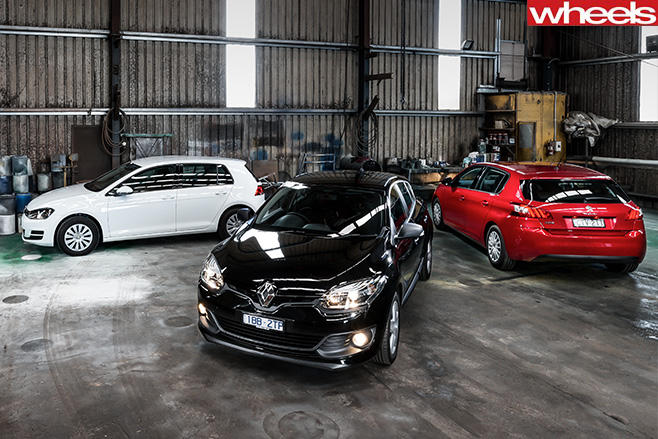
Indeed, so great is the 308’s revival of Peugeot’s once-revered abilities that it’s a close run thing between it and Volkswagen’s COTY-winning Golf. Where the VW hits hard with its outstanding refinement and devastating breadth of ability, the Pug fires back with its chirpy personality, more entertaining dynamics and hugely endearing three-cylinder engine. In comparison, the Golf’s all-round slickness almost seems a tad boring. Brilliant, yes, but for some people, just not exciting enough, especially its styling.
What nudges the VW over the line, though, is its back half. The best rear seat in its class – Golf is a true five-seater – is supported by the best boot and a benchmark rear suspension set-up.
Yet in many ways, despite not being quite as perfect, the 308 is the more likeable package. It’s prettier, sportier, more fashionable, sounds charming, is slightly quicker, yet sips just as little fuel, and is definitely more unique.
It may not be one of the greatest all-rounders ever made, which in so many ways the Mk7 Golf is, but the 308’s character is infectious, and for car tragics like us, that’s something you can’t measure.
Revival of fortune
SO WHY do car companies so often have hit-and-miss generations? Beats the hell out of us, but there’s no better example of what not to do than Peugeot.
The beautiful 306 hatch (1993-2001) wasn’t known for its Corolla-style reliability, but it still looks fantastic (below). As for the 306’s reputation for superb steering, ride and handling, it’s a feat Peugeot has never quite managed to repeat.
Its 307 successor (2001-07) steered and handled keenly, and its interior was better quality, but ride went to the dogs and so did its appearance.
Even worse was the first 308 (2007-14). It raised the facelifted 307’s toothy, beaky front to a new level of ugliness, supported by middle-of-the-road dynamics that attempted ride suppleness, but ended up pleasing no one.
Ladder climbing
BEYOND the base manuals tested here, Renault has a heavy sporting focus, with the Megane GT-Line ($26,990) gaining a Renaultsport-tuned chassis, 17s, sat-nav, sports seats and extra gear that more than justifies its $3500 premium over a dual-clutch Authentique.
For $3350 over an Access auto, the 308 Active ($27,390) scores alloy 16s and fogs, an excellent touchscreen, dual-zone climate, leather wheel, rear parking sensors and a bunch of comfort features.
VW’s Golf 90TSI Comfortline ($28,140) jumps $3850 over a base DSG and adds alloys, fogs, front/rear sensors, rear camera, dual-zone climate and rain-sensing wipers, but it lacks the base car’s value for money.
Verdict
 PEUGEOT 308 ACCESS
PEUGEOT 308 ACCESS
Price as tested: $21,990
NCAP rating: 5 stars (Euro)
Fuel economy: 7.2L/100km (test average)
Acceleration: 0-100km/h: 9.3sec (tested)
Plus: Engaging engine; superb economy; handling; ride; styling; cabin flair
Minus: Not-so-great back seat; can tell it has a torsion-beam rear at times
Verdict: 8.5/10
 RENAULT MEGANE TCe120
RENAULT MEGANE TCe120
Price as tested: $21,790 *Includes metallic paint ($800)
NCAP rating: 5 stars (Euro)
Fuel economy: 8.3L/100km (test average)
Acceleration: 0-100km/h: 10.7sec (tested)
Plus: Keen handling; excellent grip; precise steering; long warranty; decent boot
Minus: Crappo interior; unpleasant rear seat; noisy and lumpy ride; resale
Verdict: 6.0/10
 VOLKSWAGEN GOLF 90
VOLKSWAGEN GOLF 90
Price as tested: $21,790
NCAP rating: 5 stars (Euro)
Fuel economy: 7.2L/100km (test average)
Acceleration: 0-100km/h: 9.4sec (tested)
Plus: Marvellous blend of comfort, poise and refinement; efficiency; space
Minus: Understated styling; steering a little aloof at times; squealy tyres
Verdict: 9.0/10

